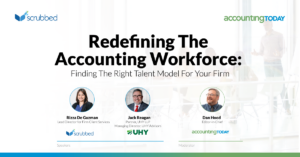In 2020, the U.S. lost $534 billion from various environmental threats, according to an analysis by Bank of America Merrill Lynch, which often results in the destruction of capital assets, compromised profitability, and potential growth.
Investors are concerned about a company’s short-term and long-term exposures to environmental threats, which are significant hazards to their investments. Thus, it is vital to understand the financial and legal risks revolving around environmental considerations that any company may face. Sufficient understanding allows a company to develop an appropriate business plan for sustainable value creation and growth.
Environmental legal risks for a business
As governments highly influence all business policies, companies should thoroughly know laws and regulations, as non-compliance results in heavy fines, penalties, and other repercussions.
Many companies have struggled due to the repercussions of non-compliance with environmental laws, which causes severe financial and brand/image damage. Here are some cases of losses due to non-compliance:
• In 2017, hundreds of workers from Walker Industries were ordered to go home because of environmental pollution andfailure to provide workers with protective gear. China’s Ministry of Environment shut down tens of thousands of factories because they couldn’t comply with the regulations.
• In 2020, the Philippines’ DENR and LLDA shut down five (5) establishments for discharging untreated wastewater into Manila Bay.
• In 2017, a massive event in China shut down thousands of factories in an unprecedented pollution crackdown which affected the supply chain in the US.
In addition to existing laws, several countries and states are now implementing Cap-Tax policies on greenhouse gas (GHG) emissions which require companies to pay a certain amount of tax for every metric ton of GHG they emit in excess of the approved threshold within their localities. Without proper planning, this tax will take a toll on a company’s financials.
Sustainable leadership protects profitability and growth.
The ability to identify and develop plans to mitigate environmental risks and seize opportunities is demanded from all business leaders. Pinpointing environmental risks (i.e., extreme weather events, disruption of power supply, calamity damage costs, higher cost for resources, and other events that might affect operations) at the early stage of business development protects investments. It enables a company to plan, implement controls and ensure compliance to avoid financial consequences. Similarly, businesses that can identify environmental opportunities will thrive in this evolving landscape toward sustainability.
Stakeholders view environmental risks into the following categories:
Transition risks are risks associated with shifting to a lower carbon economy which can be regulatory, technological, market, legal, or reputational. Transition risks expose a traditional business to a number of expenditures, such as:
• Investing in new machinery and equipment due to legal prohibition on outdated technology, due to their significant carbon output or intense water usage.
• Decommissioning cost of outdated equipment.
• Change in production or product design due to prohibitions on using outdated or scarce materials, including research and development costs.
• Business restructuring to meet customer demands for sustainable products and macroeconomic trends.
• Payment of carbon tax or purchase of carbon offsets to meet GHG emission cap.
In the U.S., the Inflation Reduction Act and other recently passed laws and proposed bills drive heightened focus on transition risks for businesses. Although they currently do not restrict the production or supply of less-sustainable products, the incentives shift the market demand to more sustainable products.
Physical risks are potential and actual exposures to the impact of climate change. These risks can be either acute or chronic.
• Acute physical risks refer to the short-term effect of climate risks, including increased severity of extreme weather events, such as cyclones, hurricanes, heat or cold waves, or floods. These events may affect operations as a result of absenteeism of employees, safety and health, and destruction or depreciation of property and assets. These risks also decrease production output, shipment difficulties, and supply chain interruptions.
• Chronic physical risks are longer-term effects of climate change (e.g., increased temperature, sea level rise, and changing precipitation patterns that may cause sea level rise or chronic heat waves). These events may increase operating costs due to a lack of water supply, cooling down nuclear and fossil fuel plants, and damage to facilities, especially in high risks areas.
Further, investors want to understand how business leaders protect their businesses from various financial risks, not just the conventional way of risk assessment but in a way that factors environmental risks in each assessment. Therefore, leaders need to evolve their assessments on the following conventional financial risks assessments:
Credit risk (i.e., the risks from a borrower’s failure to repay the interest and principal of a debt) is conventionally assessed through a look at a debtor’s financial statements. However, a good assessment of credit risks includes looking into a debtor’s sustainability report that tackles their environmental risks. As part of effective credit risk management, assessments should include potential impacts on operations caused by extreme weather events such as storms or floods and other long-term climate change impacts. These risks can halt a debtor’s ability to pay, which may not be apparent from their financial statements.
Liquidity risk or the risk of a company not having enough cash to meet short-term financial obligations (paying debt) on time. It is now a trend for investors that they expect an assessment of whether climate-related and environmental risks could impact the company’s liquidity. For example, considering the impact of such risks on natural disasters like extreme weather events that can cause losses for plant owners and diminish property values, as well as potential operational and other impediments to providing liquidity to places where climate-related or environmental risks materialize (such as financing repairs and rehabilitation), which could have a material impact on net cash outflows that can increase risks on liquidity.
Operational risk or the risks of loss from ineffective or failed internal and external events. In considering how climate risks impact internal processes, including third-party operations, it is relevant to assess uncertainties a company may face in conducting its daily activities, procedures, and systems. For example, the damages incurred from natural disasters can impede the supply of materials and shipment, equipment damages halt production, restrictions on employee mobility cause manpower shortages, etc.
While there is uncertainty as to whether environmental events would even happen, all would agree that prevention is always be better than reaction. Below are some factors that a company should consider when planning, establishing, or improving its operations:
Sourcing of sustainable materials and energy, shifting away from non-renewable resources.
Selecting a proper location. Choose a location that would:
• Not cause a negative impact on biodiversity and bodies of water
• Not be exposed to extreme weather conditions that might cause property damage
• Be accessible to employees, customers, and suppliers
Plan waste recycling and disposal.
Choose environmentally-friendly vehicles and equipment. Avoid investing in expensive machinery and equipment that might be restricted for later use.
Manage your emissions. Find ways to reduce and offset.
Select sustainable business partners who also take these factors into consideration.
How does it impact customers and employees?
Manufacturers, distributors, and retailers (“immediate customers”) relying on companies producing raw materials (“producers”) take into consideration the environmental risks to which producers are exposed.
For example, suppose a producer doesn’t have a sustainable plan for its operations and is heavily stricken by environmental disasters. In this case, its downstream supply chain would also face delays in production. Better prepared competitors will gain more by taking over the supply chain. During supplier selection (i.e., bidding process), immediate customers favor producers who are sustainably prepared and can provide assurance of a worry-free supply of materials.
Environmental risks are also considered by employees looking for job security as vulnerable employers will expose them to unnecessary harm and even financial burden. A well-established environmental risk management system (or mission, goal) helps employers attract and retain talent. For further discussion on other key considerations of employees, check out our blog on “Embracing Diversity, Equity, and Inclusion”




